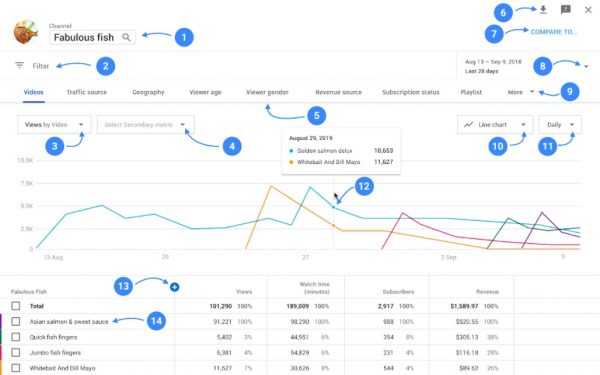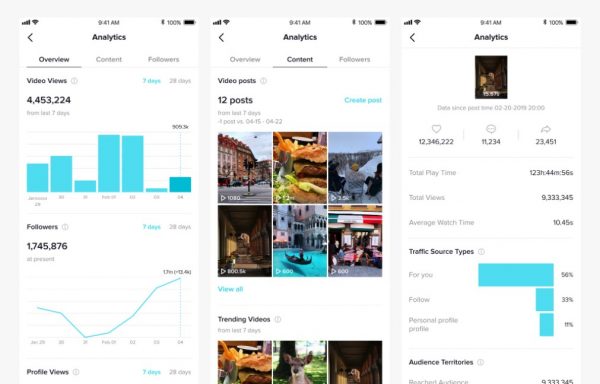When it comes to the battle of video hosting sites or apps, the main event is undoubtedly YouTube vs TikTok. Both are the leading options for online video content nowadays. But many users who plan to become influencers on the platforms have this question in mind – which of the two is better for going viral online?

If you have been wondering about that too, join us as we tackle YouTube vs TikTok from the said perspective. We will track both platforms’ scores as we go on through relevant categories. That way, you can easily decide in the end which one to stick to for online stardom.
Inside This Article
- Supported Video Length and Specifications
- Audience Pool
- Video Upload Ease and Editing
- Video-sharing and Interaction
- Analytics Provided
- Revenue from Videos
- YouTube vs TikTok: The Ultimate Winner
Supported Video Length and Specifications
When pitting YouTube vs TikTok, it is important to factor in the content you intend to post and its specifications (size, length, etc.). Do you want to go viral using professionally-made or casual videos? Also, are those lengthy or quick to watch?
Whatever your preferences are, take note of these. YouTube and TikTok let you post almost everything under the sun, except for violent, pornographic, hate, and other illegal content, of course. TikTok is designed for quick videos (also called shorts), though. As for YouTube, it’s not originally developed for the said type of trendy content, but it already added a shorts section. For clarity, here is a table summarizing the two platforms’ basic upload requirements:
| YouTube | TikTok | |
| Long Videos | Shorts | Shorts |
| 240p to 4K resolution | 600×600 to 1080x1080p resolution | 640×640, 720×1280, 1280x720p resolutions |
| Up to 60fps | 60fps maximum | Up to 60fps |
| 16:9 or 4:3 (horizontal) or 9:16 aspect ratio (vertical with thick black side fillers) | 9:16 or 1:1 aspect ratio (if less than a minute long) | 9:16 aspect ratio |
| 15 minutes maximum length (standard account) or up to 12 hours (verified account) | 60 seconds maximum length | 15 or 60 seconds, or 3 minutes long |
YouTube supporting long and short videos makes it great whether you’re posting professionally-made and serious documentaries or quick casual clips. That means it is all-around, unlike TikTok that mostly caters to less serious content that lasts a few seconds. If you’re only focusing on shorts, TikTok wins the YouTube vs TikTok battle for you. But we’re looking at universal use here, so we’re giving the first point to YouTube.
The Scores So Far: YouTube = 1, TikTok = 0
Audience Pool

Now, we’re going to take a look at YouTube vs TikTok in terms of the audience pool you might be able to reach on the platforms.
Total Number of Users
The best way to gauge how big the pool of users you might be able to serve your content to is by looking at the overall numbers. YouTube says that its logged-in user base exceeds 2 billion. Meanwhile, TikTok celebrated in September 2021 the feat of reaching 1 billion active users across the globe. Just looking at these figures, it seems that another point is going to YouTube in this YouTube vs TikTok match.
Algorithm
Before we score for the audience category, we know you have a question. Shouldn’t we also consider each platform’s algorithm, you ask? Yes, you’re right. So, let’s also tackle in this YouTube vs TikTok fray how both platforms’ systems prioritize which content to show to users.
Let’s start with YouTube. The platform has algorithms for its homepage, users’ feed, and search results. According to social media management platform Hootsuite, the homepage algorithm factors in the initial performance of your video and the peoples’ previous viewing activities. That means the early interaction you get (clicks, views, likes, or even dislikes) matters. If your video is starting to create a buzz, it might appear on YouTube’s homepage. Also, it gets served to people who have viewed similar content in the past.
As for the personal-feed algorithm, it mainly considers user interests based on viewing patterns and searches. Meanwhile, the search algorithm is said to factor in the SEO optimization of your video post, besides the interactions. If you put the right keywords on your video’s title and descriptions, your content may be noticed quickly by the algorithm.
Now, onto TikTok that is transparent about its “For You” algorithm. TikTok says it bases its suggestions on video interactions, information (captions, hashtags, etc.), and account and device configurations (location, language, etc.). For improving video information, you may want to read our walkthrough on how to use auto TikTok captions.
With these laid out, it appears YouTube and TikTok are looking at the same criteria for recommending videos. So, YouTube vs TikTok here really goes down to the audience pool size. YouTube still gets the point.
The Scores So Far: YouTube = 2, TikTok = 0
Video Upload Ease and Editing
A video hosting platform is nothing if it isn’t easy to use. That’s why we’ll also discuss YouTube vs TikTok in terms of how convenient it is to upload your content. We also consider here the tweaks or edits you can do on your videos before the upload.
Overall, YouTube and TikTok’s official websites and apps are beginner-friendly. You won’t get lost on the platforms while uploading or watching content. YouTube and TikTok’s upload icons (plus or arrow up) are easy to find on the website or mobile once you’re logged in. Viewing your competitors’ or fellow creators’ videos is easy too; content is organized in clickable tiles.

When it comes to pre-upload tweaks, though, TikTok wins this round. That is because its app has better on-the-spot editing features. For example, the trending filters instead of the traditional black-and-white and simple color effects and basic edits YouTube offers. TikTok already had some viral filters in the past, such as the Green Screen, Time Warp Scan, I’m Lost, Anime, and other funny or quirky effects. In a way, TikTok is like Snapchat due to those. And because it is known as a platform where stylized videos proliferate, your audience can relate to the aesthetic. Thus, we give the point to TikTok this time.

If you want to be an expert TikTok user, follow our tutorial on how to use the TikTok app now.
The Scores So Far: YouTube = 2, TikTok = 1
Video-sharing and Interaction

You can’t go viral if your video does not get enough interaction and shares. So, let’s touch on that topic in this YouTube vs TikTok comparison. To be more specific, we’ll share how easy or difficult it is for someone to interact and share your post on both platforms.
The good news is that both are easy. YouTube lets all users view and like or dislike videos. Logged-in users can comment and tag others on videos. The said interactive features are also supported on TikTok, and people can even comment on a video using a video.
As for shareability, YouTube video links can be copy-pasted to and from platforms and is embeddable in case you’re looking to get featured on websites. The same goes for TikTok videos. Direct sharing is even possible within the two platforms’ apps. All your audience needs to do is access your video, hit the share option, and pick the platform to send to. It’s as simple as that!
In the video-sharing and interaction category, we think the two platforms are on par with each other. YouTube vs TikTok result here is a tie — both get points.
The Scores So Far: YouTube = 3, TikTok = 2
Analytics Provided
The potential to go viral on YouTube or TikTok isn’t gauged only by looking at your views and likes. You have to analyze audience engagement using other relevant factors, too. For example, viewer demographics, average watch time, interactions increase over time, preferred content, and more. You can only get the bigger picture and pinpoint the improvements you need if you have access to analytics for the said platforms.

Thankfully, YouTube provides you with a real-time statistics dashboard via YouTube Studio – the portal or app dedicated to channel management. On the platform, you can see your videos’ performance over time, their rankings, source of traffic, impression, click-through rate, and average watch time. There are also audience-related data, including in-channel activity, subscribers (with and without notifications enabled) count, age, gender, region, and other subscriptions. There are also statistics for your earnings from videos if you access the advanced reports.

TikTok, meanwhile, lets you view analytics if you have a pro profile for creators or businesses. Its website or app can show total video views over time, increase or decrease in follower and profile views, and your trending videos and their statistics (views, likes, comments, shares, total and average watch time, traffic source, etc.). The rest of the follower-related data (demographics, location, other TikTok content watched) are only provided to you if you are past a hundred followers on the platform.
We think the analytics both platforms present are comprehensive. However, YouTube gives more freedom with how you want to see your statistics. On Creator Studio, you can even change your chart types, filter categories or metrics, and download your reports. Hence, YouTube wins by a hair strand in this YouTube vs TikTok round.
The Scores So Far: YouTube = 4, TikTok = 2
Revenue from Videos

Aspiring to be an influencer is sometimes due to both fame and earnings. If profit is your goal, here’s an overview of earnings on YouTube and TikTok.
We won’t discuss how much you can earn because that depends on your strategies. We’ll tackle the ways you can earn instead.
On YouTube, you gain money by signing up for and running your channel under YouTube’s Partner Program. To be qualified, there are YouTube criteria to meet. And those include an accumulated watch time of at least 4,000 hours and a subscriber pool of at least 1,000 users. Once met, you can collect revenue from video ads, merchandise, brand endorsements, channel member donations, and super chats and stickers people pay for to get their comments featured on live streams. Even shorts can get you a portion of YouTube’s “shorts funds”. Keep in mind that there might be taxes to pay depending on your country’s laws.
TikTok has the Creator Fund and Creator Marketplace to match YouTube’s program. On the former, you get to earn based on interactions on your original content. Like in YouTube, there are requirements (10,000 followers and 100,000 views a month). On the latter, advertisers and influencers can form partnerships and sign contracts easily. If you’re a content creator, you get support on how you can promote products.
The perks seem equal. But YouTube has a bigger audience, so expect more advertisers to get attracted to it. Also, YouTube’s Partner Program is easier to apply to, requirements-wise. So, YouTube gains the point again.
The Scores So Far: YouTube = 5, TikTok = 2
YouTube vs TikTok: The Ultimate Winner
You already know which platform won this battle based on the score tally. Overall, YouTube is better because of its bigger audience pool, in-depth analytics platform, and the ease of earning from videos posted on it. That said, you are free to choose TikTok if you think it’s still worth it or, better yet, you can try both platforms. Have different results on your end? Share your scorecard with us!
